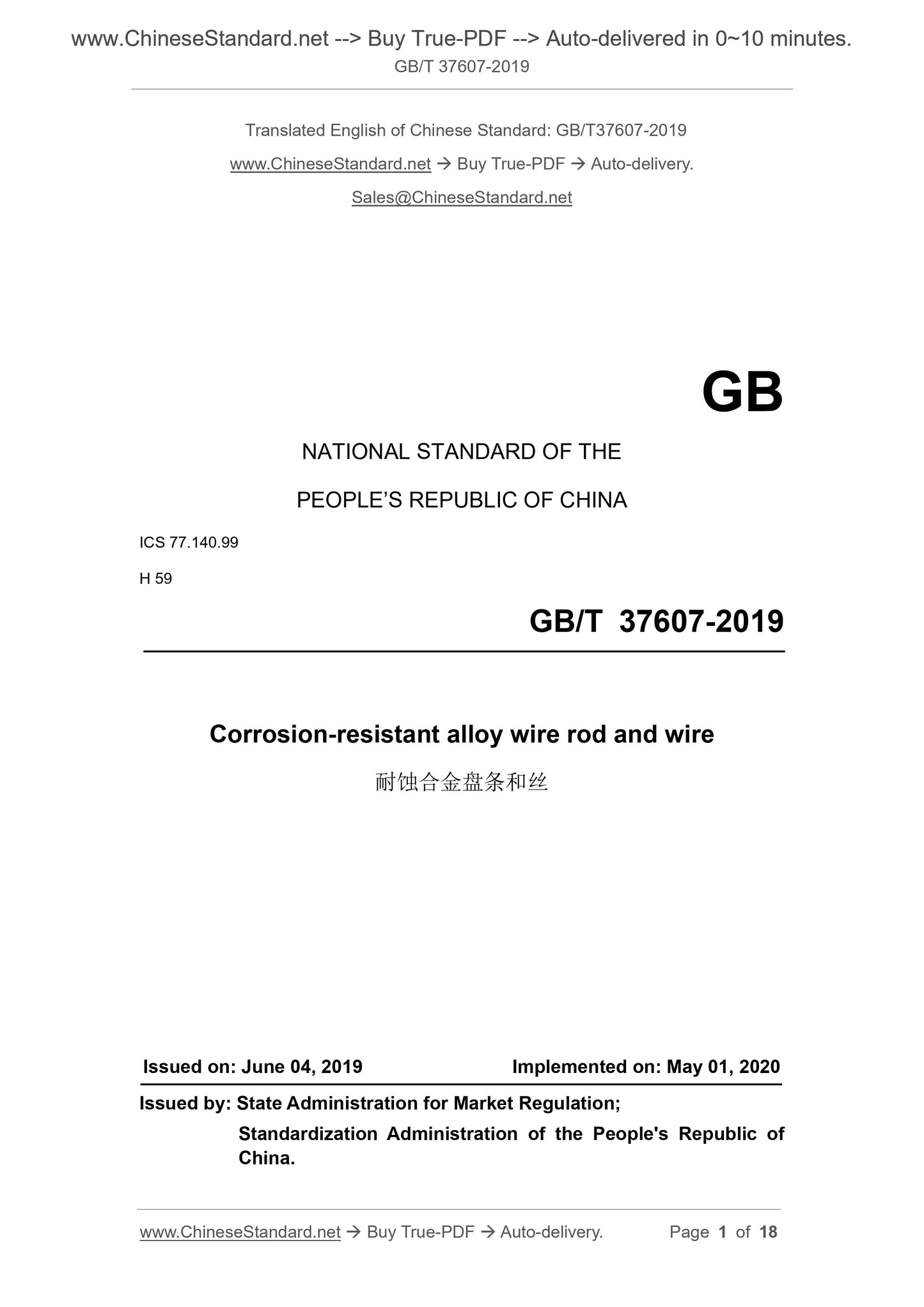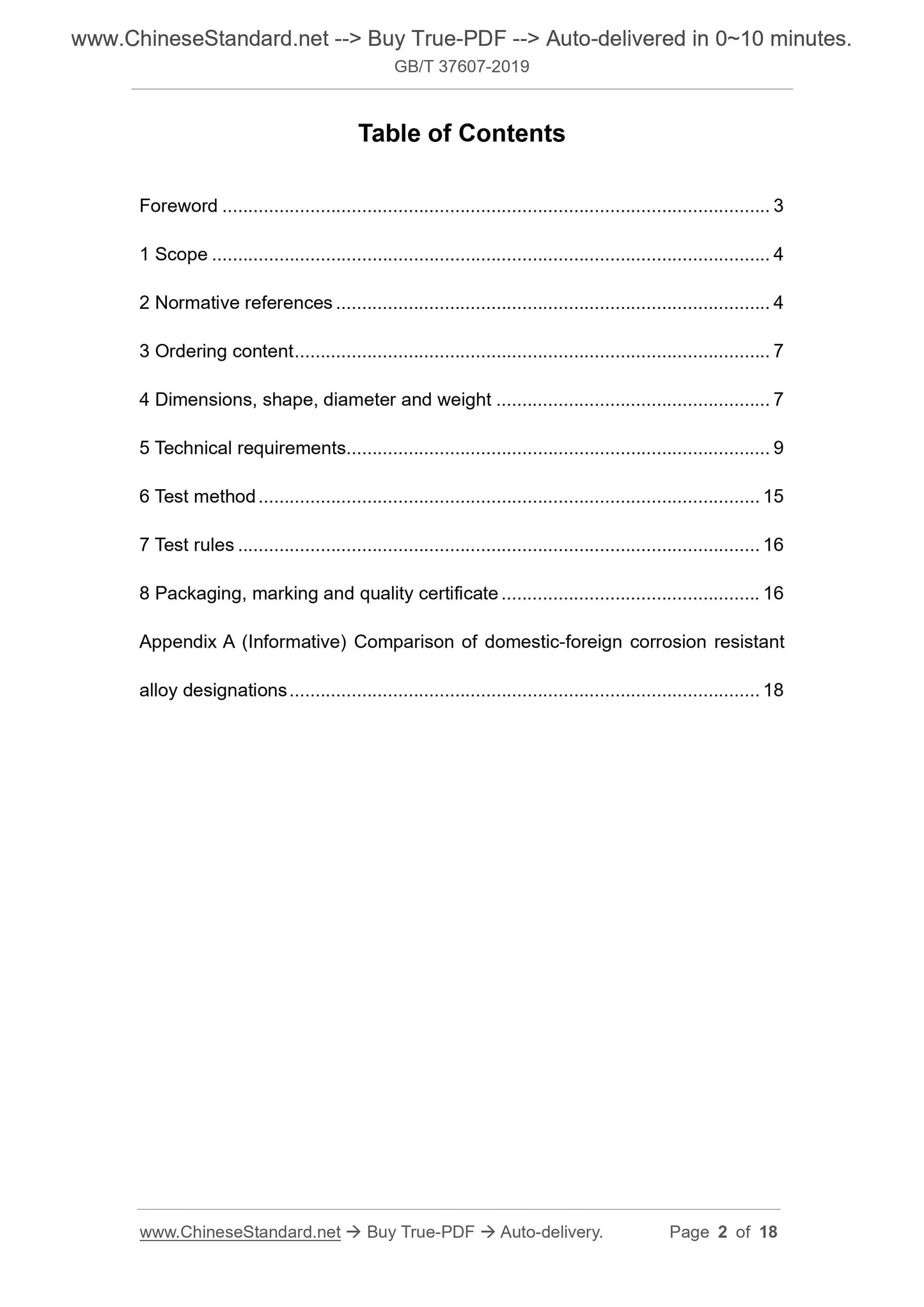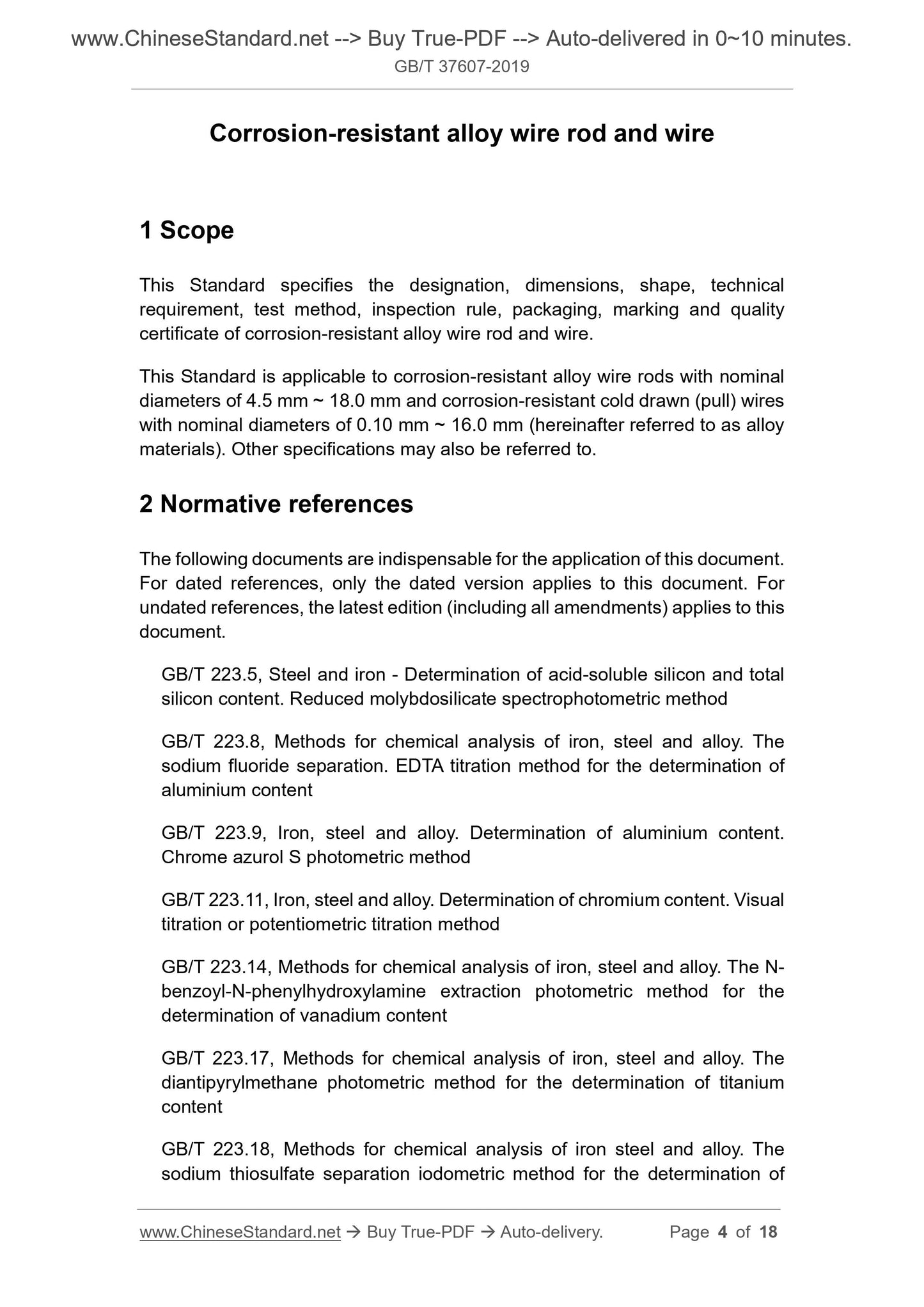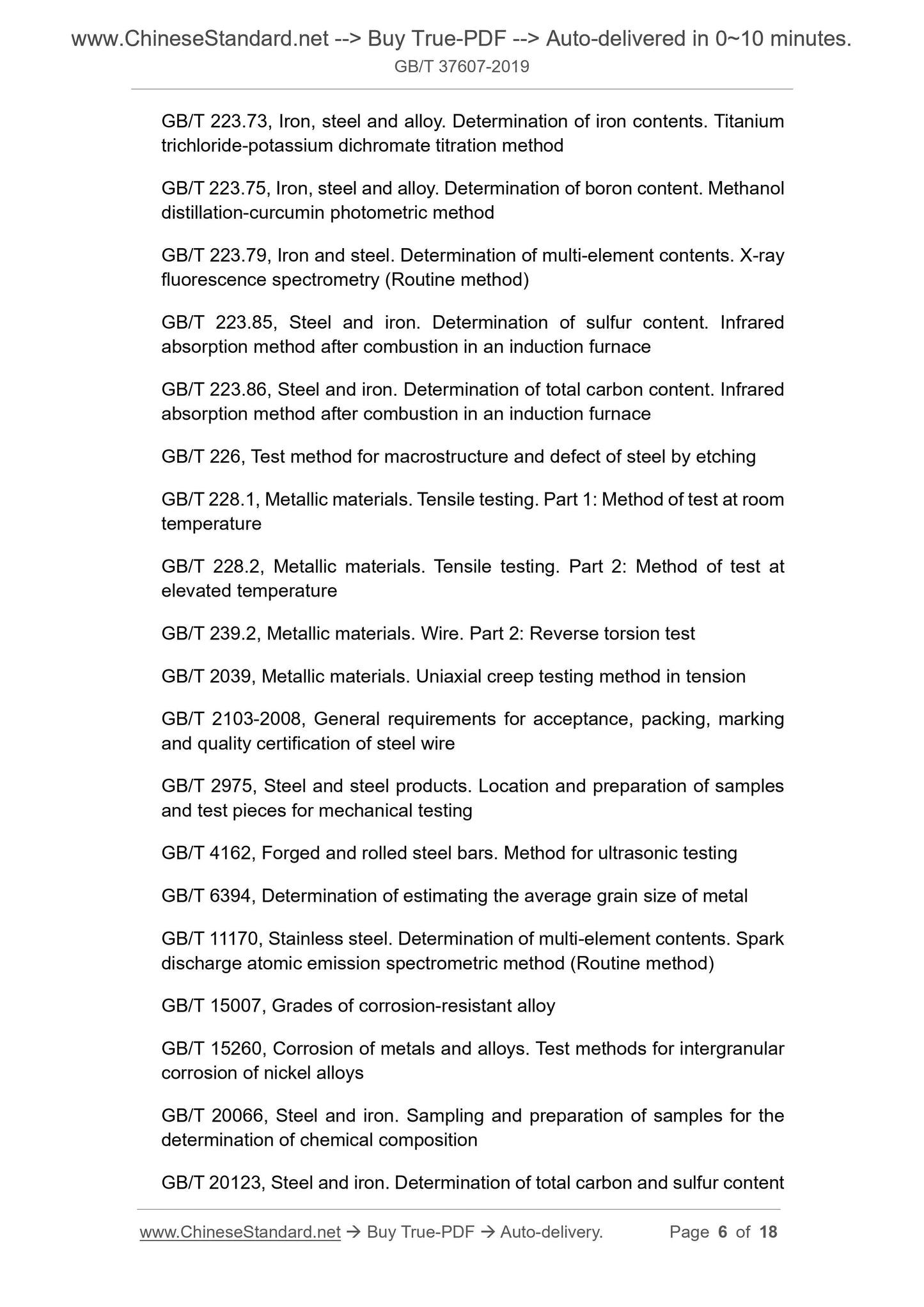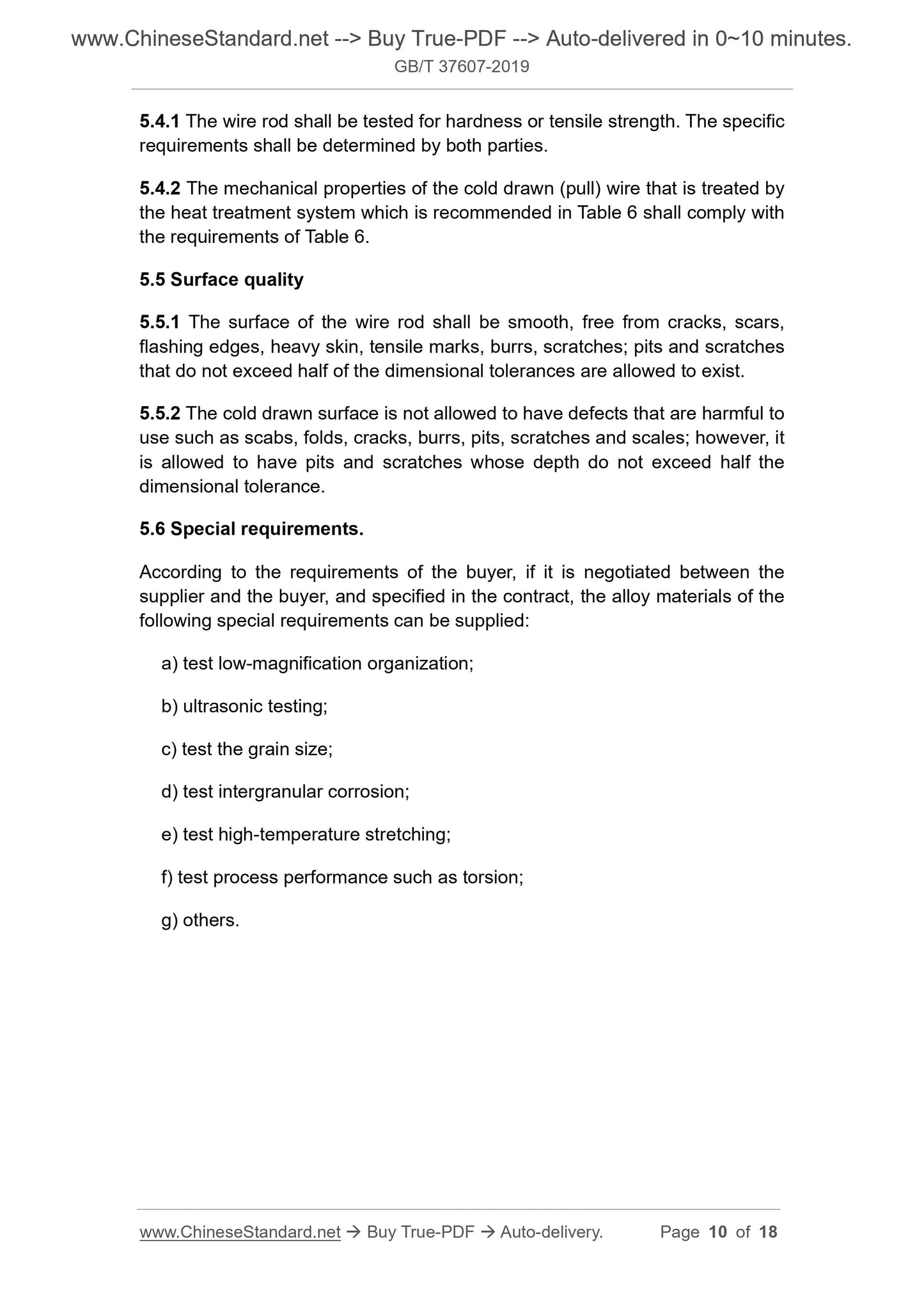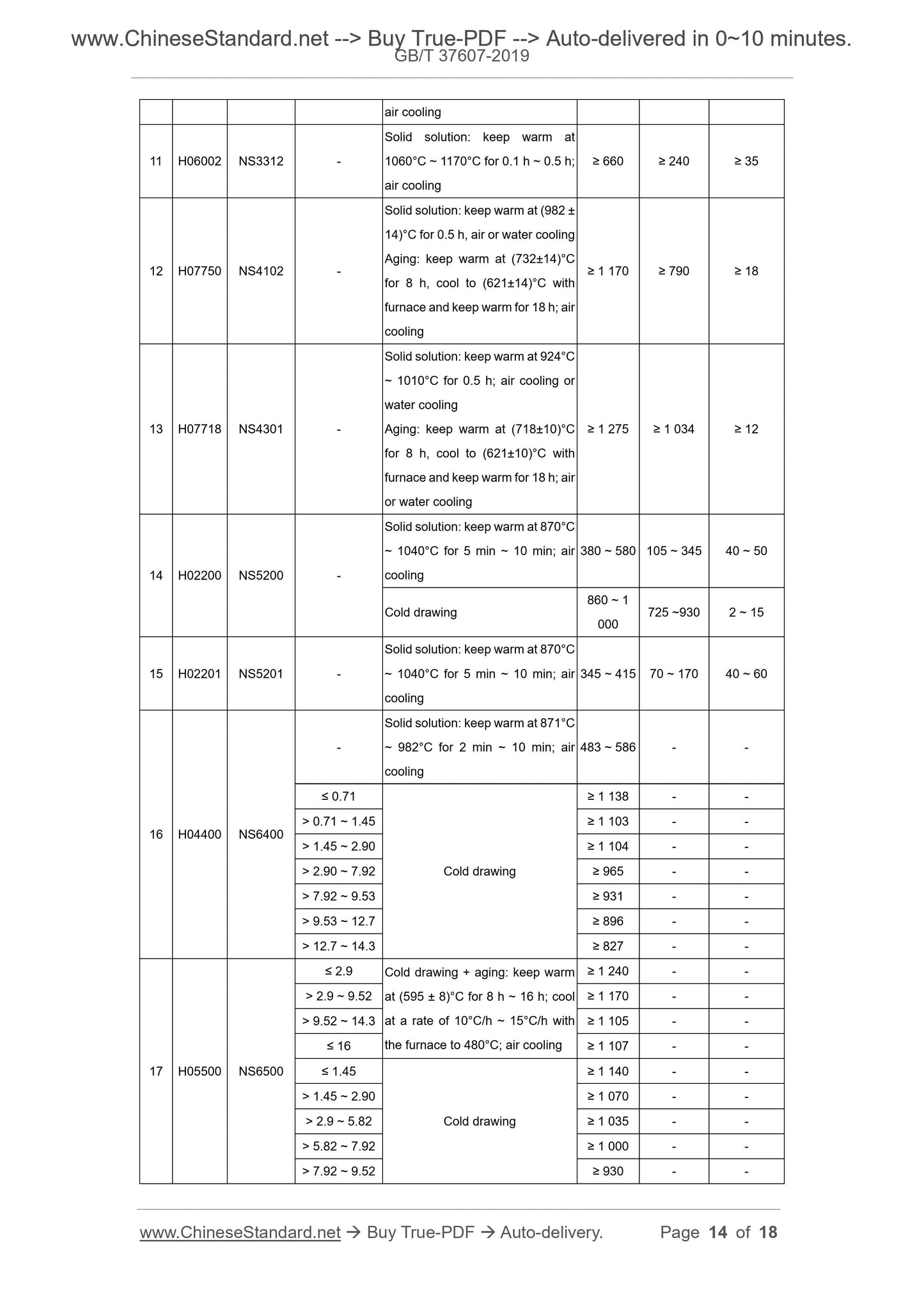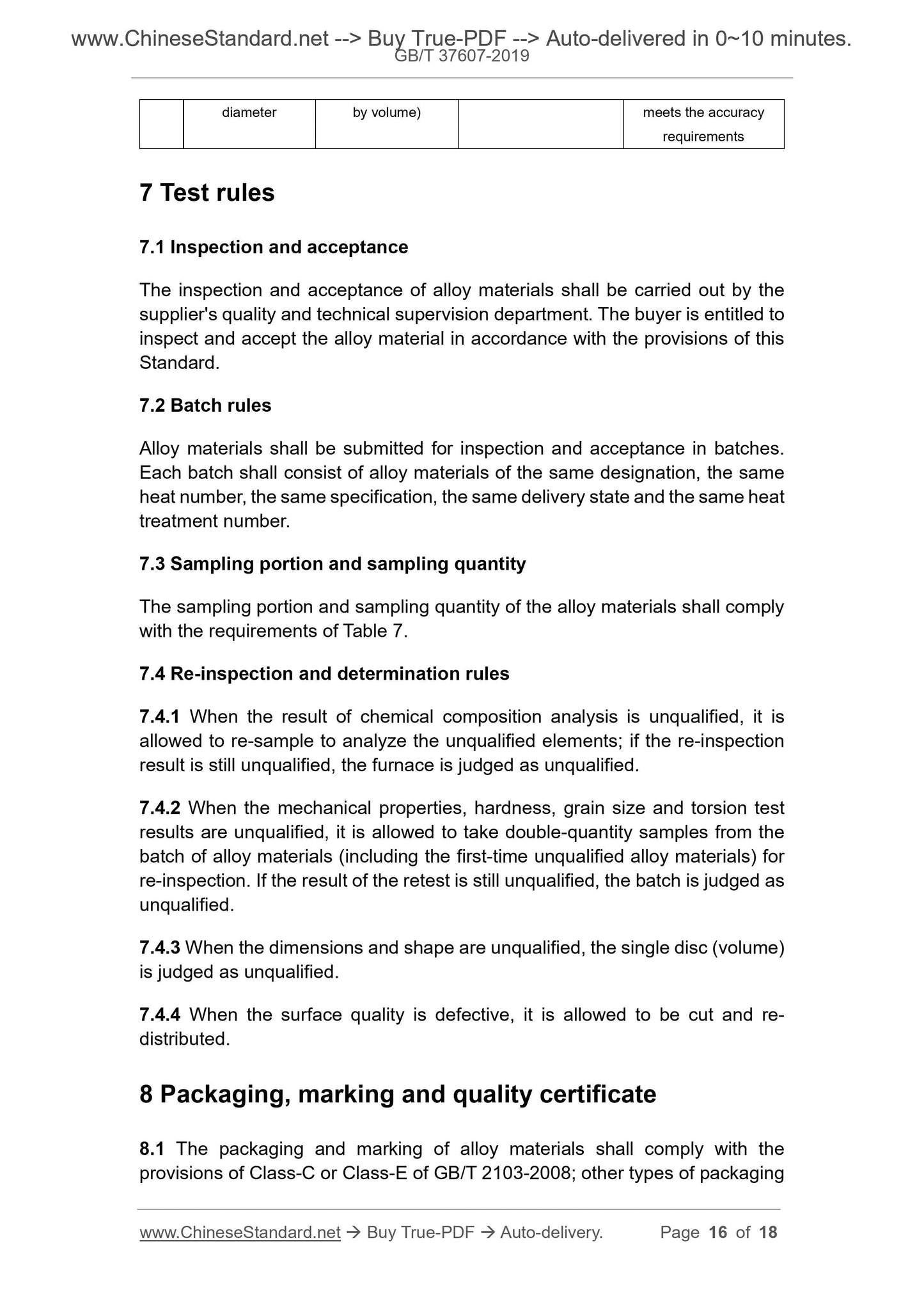1
/
of
7
www.ChineseStandard.us -- Field Test Asia Pte. Ltd.
GB/T 37607-2019 English PDF (GB/T37607-2019)
GB/T 37607-2019 English PDF (GB/T37607-2019)
Regular price
$150.00
Regular price
Sale price
$150.00
Unit price
/
per
Shipping calculated at checkout.
Couldn't load pickup availability
GB/T 37607-2019: Corrosion-resistant alloy wire rod and wire
Delivery: 9 seconds. Download (and Email) true-PDF + Invoice.Get Quotation: Click GB/T 37607-2019 (Self-service in 1-minute)
Newer / historical versions: GB/T 37607-2019
Preview True-PDF
Scope
This Standard specifies the designation, dimensions, shape, technicalrequirement, test method, inspection rule, packaging, marking and quality
certificate of corrosion-resistant alloy wire rod and wire.
This Standard is applicable to corrosion-resistant alloy wire rods with nominal
diameters of 4.5 mm ~ 18.0 mm and corrosion-resistant cold drawn (pull) wires
with nominal diameters of 0.10 mm ~ 16.0 mm (hereinafter referred to as alloy
materials). Other specifications may also be referred to.
Basic Data
| Standard ID | GB/T 37607-2019 (GB/T37607-2019) |
| Description (Translated English) | Corrosion-resistant alloy wire rod and wire |
| Sector / Industry | National Standard (Recommended) |
| Classification of Chinese Standard | H59 |
| Classification of International Standard | 77.140.99 |
| Word Count Estimation | 14,196 |
| Date of Issue | 2019-06-04 |
| Date of Implementation | 2020-05-01 |
| Issuing agency(ies) | State Administration for Market Regulation, China National Standardization Administration |
Share
